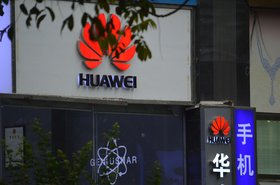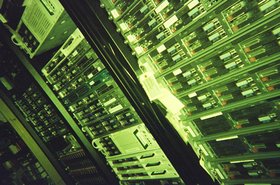As a metric, Power Usage Efficiency - or PUE - has undeniable merits. Since its introduction in 2007, it has offered a simple way to chart progress in data center efficiency. The rating is a single figure, derived by dividing the data center’s total energy consumption by that of its IT equipment alone - revealing the excess taken up by cooling, secure power supply and other factors.
Being simple and seemingly transparent, use of the metric has led to a general improvement across the industry. Between 2007 and 2018, average PUE across the industry fell from 2.5 to 1.58, meaning that energy losses were reduced by more than 60 percent.
But almost all of this progress was made over the first half of the period. Average PUE was already at 1.65 in 2013, falling only 0.07 to 2018 - and then rising when the latest data was published by the Uptime Institute in May 2019. It currently stands at 1.67. So, has progress stalled - or even begun to reverse? From an outsider’s point of view there’s still an awful lot of energy ‘wasted’ with a huge ‘carbon cost’ associated with it.
Low hanging fruit
Worryingly, it seems the easy gains have already been made. Measures like hot/cold air separation, free air cooling and better control over fans and power distribution offered big jumps early on. Now everything lies in the detail - and presents new risks. Reliance on external air leaves the center vulnerable to local events like fires; compromising on UPSs places tremendous faith in the reliability of the local grid. That faith might be hard to share for a client reliant on a single data center, for whom even a second of outage could prove catastrophically expensive.
So, while efficiency remains vital, continuing to concentrate on driving down PUE for its own sake might offer diminishing returns to all but the largest colocations and hyperscale centers. Current moves towards hybrid solutions are also undermining the efficacy of PUE as a single indicator. As servers are moved to the cloud, the PUE of remaining server-halls increases because overall energy consumption, although falling, is divided by fewer servers. It is this migration to the public cloud that seems to have driven 2019’s global rise in average PUE.
Besides, data center PUE isn’t the same as PUE per kW of IT load. A center might improve its own apparent efficiency by raising internal temperature and passing work to the fans in the client’s own equipment - together with the cost.
The real issue is that PUE doesn’t truly reflect other kinds of efficiency gain, which form an increasingly important part of a center’s environmental profile. Take heat return, using heat produced by the IT equipment in the data center either to provide heating for homes and businesses, or via heat pumps to generate power directly, as an example. It has the potential to substantially decrease energy waste, but the additional equipment needed could increase the center’s PUE rating.
In the real world, of course, clients rarely make a decision based on a single factor. In December 2018, Supermicro published research suggesting that 59 percent of decision-makers considered power efficiency important. But, strikingly, 58 percent did not even know their data center’s PUE. The research also found that only nine percent made power efficiency the primary factor in their strategy with security, connectivity and performance all seen as equal if not greater influences on decision making. However, because efficiency impacts so many other aspects of operations, from cost to reputation, this figure likely underplays the real impact of efficiency on decision-making.
For both data centers and clients, efficiency must remain a central consideration - to reduce both costs and environmental footprint. As scrutiny mounts, the key is to retain a sophisticated approach, without over-relying on any single metric. A wider range of metrics and impacts should be considered, including:
- Using renewable energy. Audit where electricity comes from, offsetting helps, but the ideal is an auditable energy supply chain that guarantees every kWh consumed has been directly generated from a renewable source.
- Better design. Modern, modular and flexible, purpose-built facilities are much more efficient and can be set up to meet precise KPIs for performance and efficiency.
- Expertise. The commercial and environmental impact of data center operations is so large they need to be managed by dedicated teams with the specific skills and knowledge to make good decisions.
- Better maintenance. These expert teams will understand specialist equipment and keep it working at optimum levels saving money and increasing sustainability.
- Innovation. Nothing stands still in the world of data centers. Innovation is ongoing, and each iteration offers enhancements to efficiency and reductions in carbon cost. Ensuring that you are capitalizing on the best innovations is fundamental to continued progress on sustainability.
- Partnership. Every customer, every load, is different. For some redundancy will be critical, for others direct cloud connection - advising and flexibly adapting to changing needs can create opportunities to create new efficiencies.
Any metric must be seen as a signpost rather than the solution itself. Blind adherence to any single measure can distort decision-making and ultimately impede progress in this essential area. As scrutiny intensifies, rather than relying on a single ‘magic bullet’ metric like PUE, data center operators, and their customers in the business, must routinely challenge themselves with deeper questions that uncover the real efficiency of their solutions.
This wider, more comprehensive view of real progress on efficiency will lead drive better commercial, environmental and reputational outcomes.





